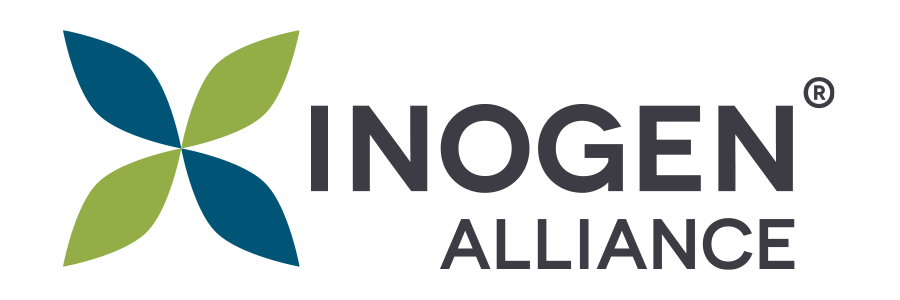How to Build an Effective EHS Audit Checklist

Audits may not be the most glamorous part of Environment, Health, and Safety (EHS) management, but they are undoubtedly one of the most important. A well-executed EHS audit does more than ensure compliance with complex regulations — it safeguards employees and strengthens organizational integrity. With sustainability and corporate responsibility front and center for both customers and shareholders, EHS audits have become a vital tool for reducing risk and creating long-term value.
Our podcast, Rethinking EHS, recently featured two episodes in which we spoke with EHS leaders about the importance of and methodology behind successful EHS auditing.
Host Phil Dillard was joined by specialists from across the APAC, EMEA, and US regions. Together they shared a number of important insights into the current state and future of EHS auditing. This post distills the most impactful takeaways from those interviews, and lays out a broad framework for what you should look for in an optimized EHS audit checklist.
Listen to the episodes:
- The Rising Demand for EHS Audits in the Asia Pacific Region | Inogen
- Helpers and Educators: EHS Audits in EMEA and the U.S. | Inogen
What Is an EHS Audit?
EHS audits are essential tools for organizations seeking to ensure compliance with legal requirements, identify operational risks, and align their business practices with sustainability goals. Audits can encompass assessments of workplace safety, environmental management, and regulatory adherence, serving as a “health check” for businesses to evaluate their regulatory compliance.
Beyond compliance, audits also enable organizations to proactively address risks and uncover opportunities for improvement. For instance, they can help identify gaps in processes, promote safer working conditions, and drive efficiencies across supply chains.
Learn more: 8 Reasons Why Your Business Needs an EHS Audit
Key Components of an Effective EHS Audit Checklist
An effective EHS audit checklist can serve as a roadmap for EHS-navigation within your organization. However, a one-size-fits-all approach rarely works in a world where regulations, industry requirements, and business operations vary widely across regions and sectors. Customizing checklists to address specific organizational and regional needs is critical to achieving meaningful results.
Finding an EHS auditing partner who has experience and expertise will ensure that your organization’s EHS audit process is thorough and applicable to your specific needs.
Navigating regulatory requirements
As more businesses expand globally, understanding regulatory complexities has truly become the cornerstone of a successful EHS audit. Local laws, national standards, and international frameworks like ISO certifications or the European Union’s Corporate Sustainability Reporting Directive (CSRD) often dictate how organizations must operate. In regions like APAC, regulations are sometimes only published in local languages, creating potential for misinterpretation when multinational companies attempt to translate them.
To build a thorough checklist, organizations must conduct extensive research to document all applicable laws and standards, including evolving requirements. This research ensures that no compliance gaps are overlooked, whether in air quality controls, hazardous material handling, or worker safety protocols. Staying ahead of regulatory updates also positions businesses to adapt quickly to changes and maintain compliance with confidence.
Include compliance and conformance checks
Compliance with legal obligations is only one part of the equation. Leading organizations also aim for conformance with internal standards and best practices, ensuring alignment with broader operational goals. For instance, benchmarks like ISO 14001 for environmental management or ISO 45001 for occupational health and safety help define and measure high standards of performance.
Incorporating these frameworks into the checklist ensures that audits not only satisfy external requirements but also create benchmarks for organizations to achieve excellence in areas like sustainability, employee wellbeing, and operational efficiency.
Account for facility-specific needs
Every facility has unique operational and environmental considerations — this is why it is vital to tailor the audit checklist accordingly. For example, warehouses and distribution centers may need to account for overlooked risks like stormwater permits, even though they are not traditionally considered high-impact facilities. Similarly, manufacturing sites may require extensive reviews of equipment safety protocols or chemical handling processes.
Tailoring the checklist to address these specifics ensures that no critical aspect is missed. This level of customization also allows organizations to identify risks unique to their industries and proactively address them before they escalate into larger issues.
Develop a comprehensive action plan
An audit is only as effective as the steps taken afterward. A strong EHS discipline must include a framework for developing a corrective action plan that prioritizes issues based on risk and impact. This helps organizations allocate resources, addressing the most pressing issues first while creating a timeline for tackling lower-priority items.
Data collected during the audit informs these plans. To maintain momentum, action items should be clearly defined, assigned to specific team members, and accompanied by trackable due dates.
Trends Shaping EHS Audits Today
The scope and significance of EHS audits are rapidly evolving as global markets expand, new technologies emerge, and sustainability becomes a central focus for businesses. Below are three major trends reshaping how organizations approach EHS auditing:
Multinational expansion
“We try wherever possible to use our local partners to do the audit … because the local partners know the local legislations.” – Dr. Roland Langmoen, Helpers and Educators: EHS Audits in EMEA and the U.S.
As companies expand operations into new regions, the demand for EHS audits has surged, particularly in dynamic markets like APAC and EMEA. Countries such as India, Vietnam, and China are hotspots for growth, driven by industries like technology, manufacturing, and supply chain logistics. This rapid development presents a dual challenge: navigating complex local regulations and ensuring compliance across diverse operational environments.
For multinational organizations, audits provide a critical mechanism for understanding regional regulatory nuances while standardizing best practices globally. Companies entering these markets must also address language barriers and cultural differences, which make local expertise an indispensable part of the auditing process.
Remote audits
The COVID-19 pandemic accelerated the adoption of remote audits, offering businesses an efficient and cost-effective way to maintain compliance without extensive travel. While virtual audits were initially a necessity during lockdowns, they’ve proven to be a lasting innovation, particularly for companies operating in regions with logistical or economic constraints.
“When factories have budget concerns … Some clients prefer to use remote audits. We use VR technologies to cut the cost.” – Tom Tang, The Rising Demand for EHS Audits in the Asia Pacific Region
Advancements in technology, such as virtual reality (VR) tools and remote data collection platforms, have made it easier to gather and analyze compliance information without physical site visits. These methods not only reduce costs but also contribute to sustainability by lowering the carbon footprint associated with travel. However, virtual audits come with their own challenges, requiring auditors to develop new skills in remote assessment and communication.
Integration of ESG goals
One of the key challenges in aligning Environmental, Social, and Governance (ESG) and EHS goals is ensuring that corporate-level strategies translate effectively to individual facilities. Facility managers often face pressure to meet ambitious targets without clear guidance or adequate resources. Audits are an excellent tool for bridging that gap, providing actionable insights to align operations with overarching ESG objectives.
“We’re seeing corporate level or stakeholders pushing down or developing strategies and goals … And what we’re hearing from the facility level personnel is … they don’t know how they’re going to meet these goals.” – Lauren Corbett-Noon, Helpers and Educators: EHS Audits in EMEA and the U.S.
The Future of EHS Auditing
EHS auditing is undergoing a transformative shift, reflecting the evolving priorities of businesses, regulators, and society. As companies strive to align their operations with global sustainability goals, the future of EHS auditing will be defined by deeper integration with organizational strategy and an expanded focus beyond compliance.
From compliance checker to business partner
The traditional view of auditors as enforcers is giving way to a more collaborative role. In the future, auditors will increasingly act as business partners and educators, helping organizations meet regulatory requirements as well as identify opportunities for improvement.
Integration of sustainability goals
The future of auditing will focus on bridging the gap between corporate sustainability goals and on-the-ground implementation. By embedding sustainability into audit frameworks, organizations can align their ESG strategies with day-to-day operations, ensuring both compliance and meaningful progress toward broader environmental and social objectives.
The ripple effect across supply chains
In sectors such as manufacturing and technology, where supply chains span multiple countries and regulatory environments, audits will play a critical role in ensuring accountability and consistency. Over time, this cascading impact can raise industry-wide standards, fostering a more sustainable and ethical global marketplace.
Organizations that invest in forward-thinking EHS audits will not only meet today’s challenges but position themselves as leaders in a more responsible and resilient global economy.
Inogen Alliance’s global network of EHS specialists have the knowledge and expertise to help your organization build a comprehensive EHS audit checklist.
Inogen Alliance is a global network made up of dozens of independent local businesses and over 6,000 consultants around the world who can help make your project a success. Our Associates collaborate closely to serve multinational corporations, government agencies, and nonprofit organizations, and we share knowledge and industry experience to provide the highest quality service to our clients. If you want to learn more about how you can work with Inogen Alliance, you can explore our Associates or Contact Us. Watch for more News & Blog updates here and follow us on LinkedIn.

